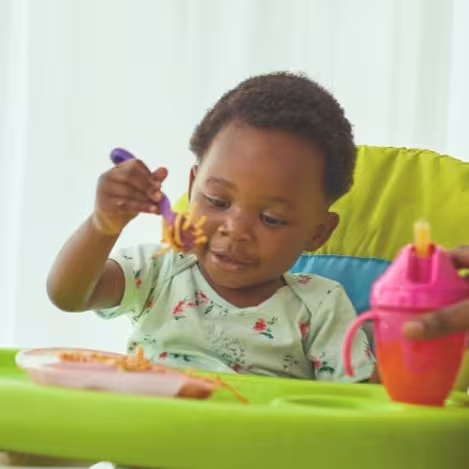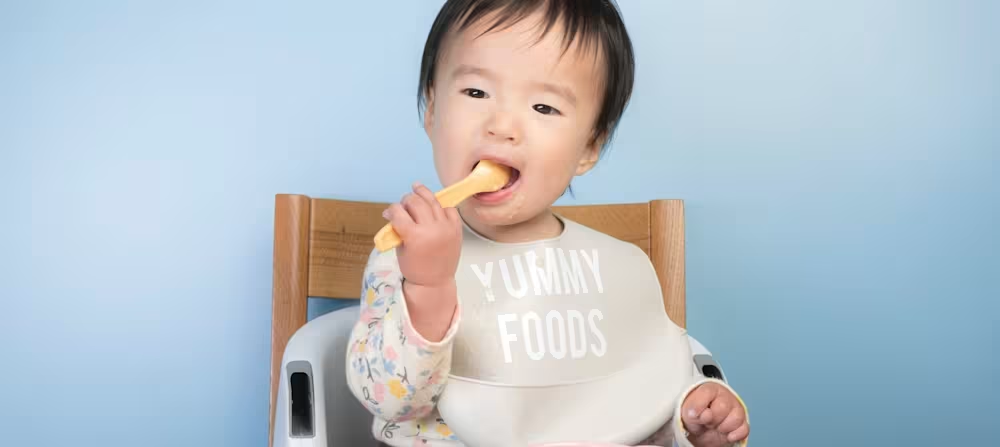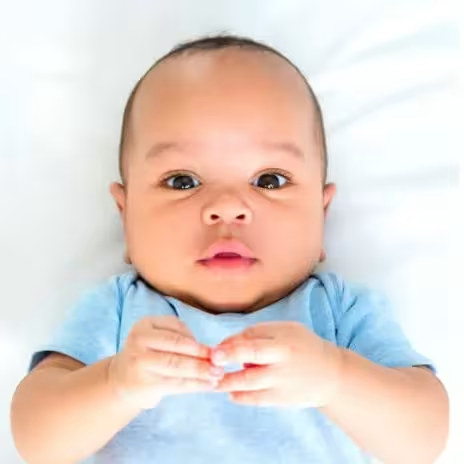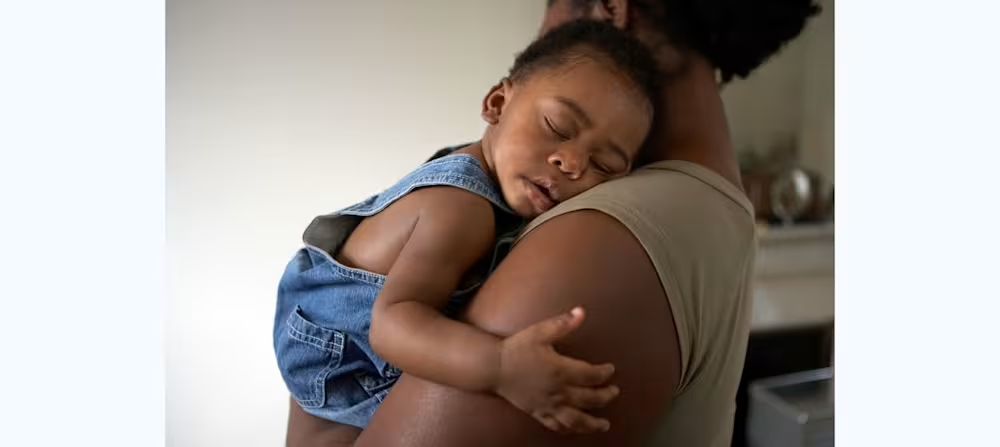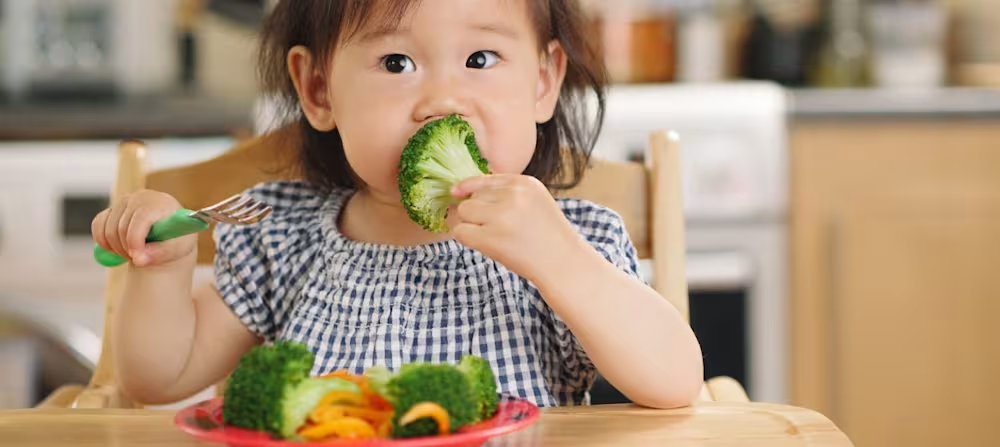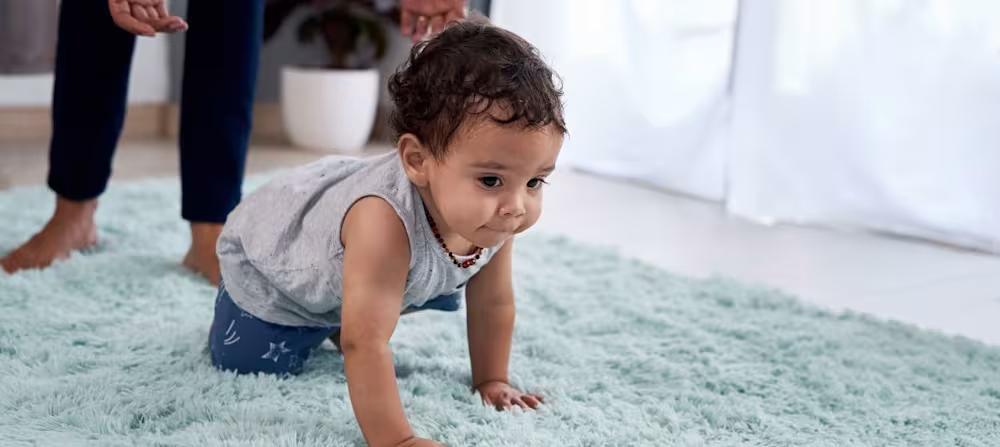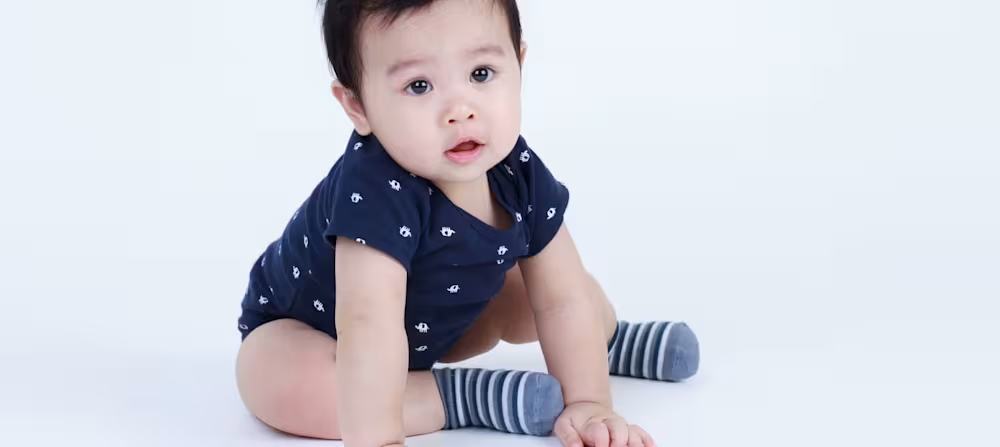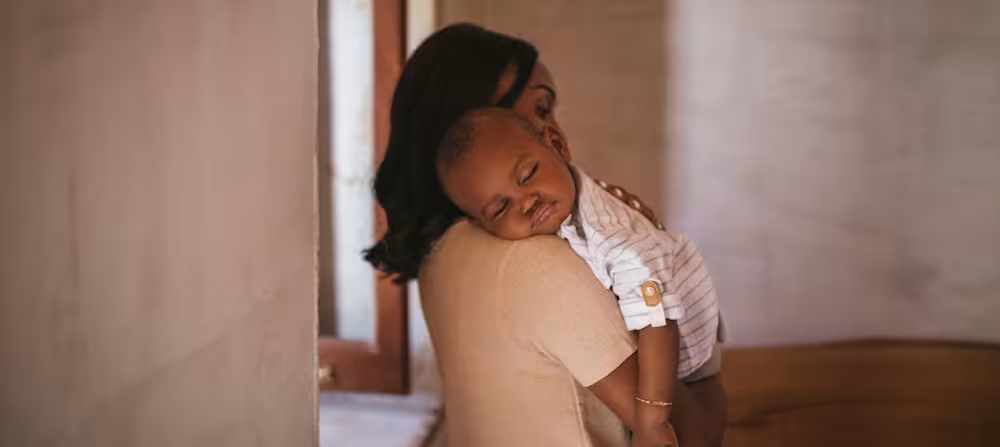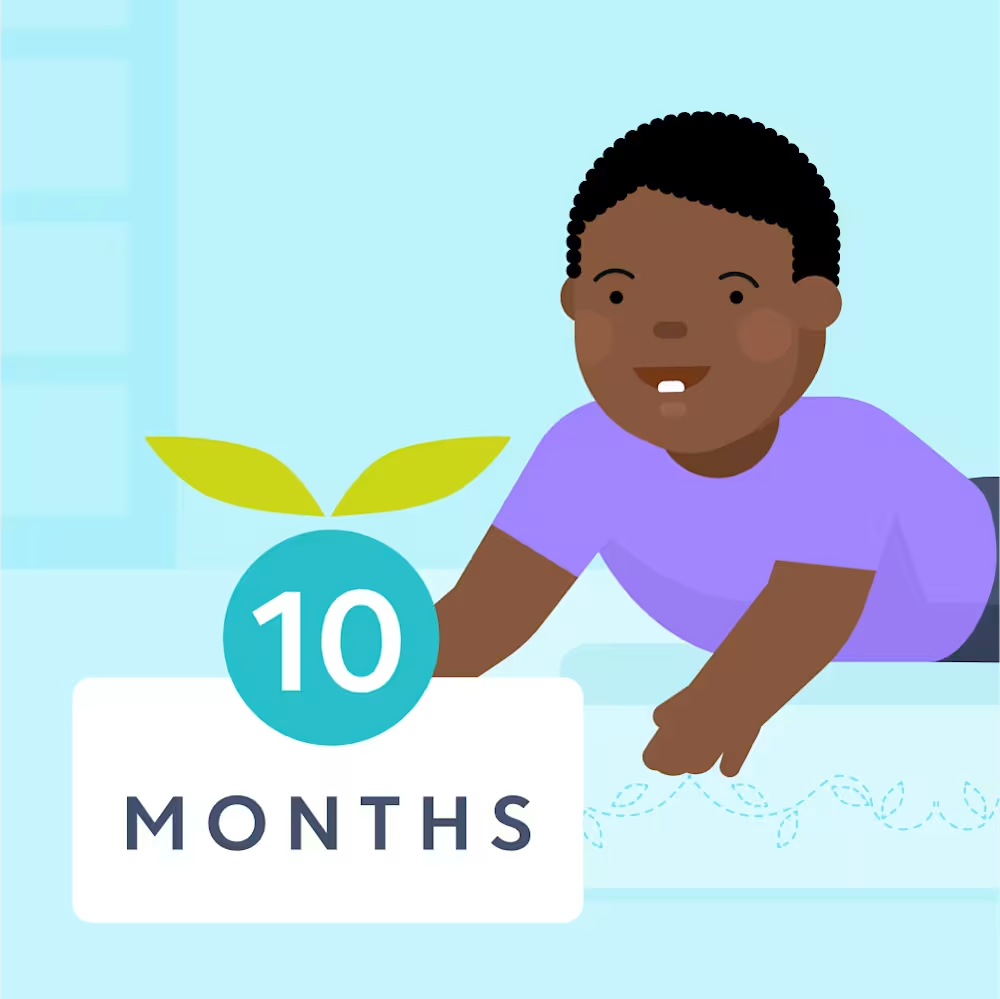10 month old baby milestones: Development, growth, speech, language
Updated Dec 02, 2025

When your little one reaches the 10 month mark, you can expect a flurry of significant milestones. From their first (assisted) steps to the blossoming of their social and emotional skills, this period is often filled with exciting developments.
In this article, we’ll look at typical 10 month old milestones, including physical growth stages along with social and cognitive development. We’ll also provide you with a handy checklist, development tips, and discuss potential red flags.
Editor's note
Keep in mind that whenever we’re discussing babies and development, we’ll be using their adjusted age as opposed to their actual age. It’s also important to recognize that babies develop on a continuum, and some may reach these milestones sooner or later than others. If you have any concerns about development, it’s always best to have a conversation with your trusted healthcare provider.
Table of Contents
10 month old baby milestones at a glance
Development:
Between 8 - 12 months, many babies are able to move in and out of several positions to explore their environment. This may include crawling, moving from a lying down position to sitting, pulling themselves into a standing position, maintaining a standing position with or without support, and walking [, , ].
Fine motor skills are also developing enabling them to pick up smaller objects more precisely.
Socially and emotionally speaking, your baby is likely able to clearly show their emotions and they may display (they start to understand that they're separate from the person they depend on for care and safety).
Sleep:
At 10 months of age most babies need at least 11 hours of sleep at night with two predictable naps each day. It's normal for your little one to wake and resettle during the night. Usually, 10 month olds don't need to call for their parents throughout the night if all of their needs have been met and they have practice falling asleep on their own without help (e.g. being rocked or fed to sleep).
While most babies this age don’t need night feedings, we do find that an early morning feeding may help extend night sleep in some cases. You can read more about 10 month olds and sleep
Feeding:
Breastmilk and/or formula should provide the majority of the nutrients at this age [].
By 10 months of age, your baby may be eating and enjoying a variety of solid foods while continuing to consume breastmilk and/or formula as an essential part of their diet as well. That may look like 2 - 3 solid food meals a day as well as 3 - 5 nursing sessions or bottles.
Babies are often capable of using an an open cup and can finger-feed themselves. Some 10 month olds may even be ready to start self-feeding with utensils. You can visit our blog for lots of information on feeding your baby
10 month development milestones
Physical development between 8 - 12 months
Gross motor skills
Reaching: Around 10 months of age your baby may be able to transition in and out of various positions to explore their environment and reach their favorite toys. Once your baby spots their favorite toy, it won’t take them long to get from their belly to their hands and knees to go check it out!
Sitting: Your baby may be able to sit without using their hands for support.
Throwing: They also may be able to throw objects (watch out for flying toys).
Balance: Little ones may be able to turn their head from side to side and play with their toys without toppling over!
Standing: Your baby may be able to pull themselves up into a standing position. Many parents will notice their babies pull up on their crib rails to stand. This is the time to lower that crib mattress to the lowest setting to keep your baby safe if you haven’t done so already!
Editor's note
There is always a spectrum with physical development. Little ones may be able to maintain a standing position independently. Don’t be alarmed if your baby’s posture looks different from your own! It’s typical for babies to stand with their back swayed; belly protruding and rear end sticking out. This posture helps them keep their balance until they become more skilled and confident!
Crawling and walking: Your baby might be crawling proficiently or even taking their first steps with or without assistance. Once they take their first steps you may notice their feet are turned out instead of pointing straight ahead. This is typical and due to a baby’s loose hip ligaments that will be tightening up over the upcoming months. You might also notice the bottom of your baby’s feet look pretty flat. In the upcoming years, as their feet develop, arches will appear.
Fine motor skills
Pincer grasp: At the age of 10 months, coordination often improves as fine motor skills develop, allowing your baby to pick up smaller objects with precision. They’ll be using these skills at playtime and mealtime alike. They may be developing their pincer grasp [] at this age (being able to use their thumb and pointer fingers to pick up objects and then release them).
Communication
Imitation: At 10 months babies exhibit a range of vocalizations including different vowel sounds. They are able to imitate sounds and actions as part of their learning process.
Babbling: You may notice that their babbling has a sound and rhythm similar to actual speech, though you probably won’t be able to understand what they’re saying. Some babies will start to say one or two words and can meaningfully use “mama” and/or “dada”.
Simple directions: Many can respond to “no,” simple directions such as “come here,” and their own name.
Gestures: They’re paying attention to where you look and may be able to point and their wants and needs. They may stretch their hands up towards you when they want to be picked up or point to the food on the counter when they’re hungry.
Social development between 8 - 12 months
Emotional development
Separation anxiety: At 10 months of age, you’ll notice your baby’s growing attachment to you and possibly other familiar caregivers. This attachment can result in separation anxiety and preferences for particular caregivers over others. It also means they are easily comforted by your cuddling and physical touch and that they feel safe with you.
Expressing emotions: Babies this age are typically able to clearly express their emotions such as happiness, frustration, and excitement. They may be generally happy except when they’re tired or hungry.
Play
Exploration: 10 month old babies are exploring their growing curiosity about the world and eager to check out their surroundings. Because of their improved mobility, they’re able to investigate their environments more independently. They’ll be drawn to objects and will use their developing motor skills to reach for, touch, and manipulate them.
Games: They love engaging in games like peek-a-boo and patty cake, especially with their favorite people. They enjoy listening to music, banging on musical toys, and banging on anything that can produce a musical sound like your pots and pans.
Sensory skills: They enjoy playing with a variety of textures.
Vestibular system stimulation: 10 month olds love to move and enjoy different types of movement such as playing on a swing or being gently swung in the air by their caregivers.
Object permanence: At this age, babies will begin to actively search for items you've hidden, showing growth in their cognitive skills and understanding of object permanence. They know the object they want is there somewhere, but where did it go?!
10 month milestones checklist
It's essential to understand that babies follow a developmental spectrum, and the timing of reaching these milestones can vary among individuals. The developments below typically occur between 8 - 12 months of age. If you have any concerns about your child's development, it's best to engage in a conversation with your baby’s healthcare provider.
Sits without support while throwing objects and turning their head.
Transitions in and out of various positions to explore and obtain their favorite toys.
Pulls to a standing position and cruises along the furniture.
Stands independently and may take a few steps with or without help.
Uses thumb and pointer finger to pick up tiny objects and is able to release them into a container with a wide opening.
Explores objects with curiosity.
Imitates sounds and babbles.
Responds to simple directions, “no,” and their name.
Looks where you point.
Demonstrates attachment to caregivers.
Engages in simple games like peek-a-boo, patty cake, and banging on musical instruments.
Begins to express emotions more distinctly.
Responds to your smile with a smile.
What are 10 month old development red flags?
Missing one or two abilities is no cause for alarm! However, if your 10 month old is not able to sit unsupported, hold up their head, and isn’t showing any signs of pulling to stand, or has lost skills they once had, it’s a good idea to check in with your trusted healthcare providers [, ].
Check in with your little one's doctor if you notice any of the following []:
Cannot support weight on legs even when held upright
Cannot sit with assistance
Does not make babbling sounds like “mama,” “baba,” or “dada”
Does not engage in simple interactive games
Does not respond when their name is called
Does not appear to recognize familiar people
Does not follow your point or look in the same direction
Does not move objects from one hand to the other
7 development tips for 10 month olds
Tip | Why it helps | What to try |
|---|---|---|
Build balance for early walking | Before babies take their first steps, they need strong balance and confidence while standing unsupported. | Give them safe standing practice by offering a toy to hold or gently passing an object back and forth for balance and coordination. |
Make music together | Music supports rhythm, motor skills, and early communication. Plus, it’s fun sensory play! | Use whatever you have: pots, pans, wooden spoons, or your own voice. Encourage your baby to tap, shake, and bounce along. |
Have real “conversations” | Back-and-forth babbling helps babies learn turn-taking, early word patterns, and social communication. | Describe what you’re doing, name objects, and respond to their sounds (even if you can’t understand them yet). |
Keep routines predictable | Consistent daily rhythms help babies feel secure, regulate their emotions, and understand transitions. | Create simple patterns around meals, sleep, and play. Narrate what’s happening (“First bath, then pajamas”) to help them anticipate what comes next. |
Offer varied foods and textures | Exposure to a range of flavors and textures expands eating skills and supports healthy nutrition. | Include soft finger foods, mashed options, and family meals when possible so your baby can observe how and what you eat. |
Prioritize social play | Peer interaction builds early social skills, such as observing, taking turns (loosely!), and exploring new environments. | Plan low-pressure playdates or spend time at parks. Even side-by-side play with other babies offers valuable social learning. |
Make reading interactive | Shared reading promotes language development, attention, and early literacy skills. | Let your baby help turn pages, point to pictures, tap objects, or mimic sounds. Use expressive voices to make stories engaging. |
Find more details below:
Tip #1: Tiny tot teeter
Your baby may be getting ready to walk on their own soon but they need steady standing balance first! While your baby is standing without holding onto anything, give them their favorite toy to play with. You can even have them pass a favorite toy back and forth with you!
Tip #2: Musical mayhem
Turn your home into a musical wonderland. If you don’t have any musical toys grab your pots and pans and bang away with a variety of kitchen spoons. Sing your heart out and encourage your little one to join!
Tip #3: Baby talk
Engage in regular conversations with your baby. Describe objects, actions, and emotions. Don’t forget to respond to their babbling. Even if you can’t understand exactly what they’re saying, this back-and-forth communication will teach them so much about language and conversation!
Tip #4: Routine is key
Consistency provides stability and security for your baby. Create a daily routine for meals, sleep, and playtime. Narrate the routine as you move through your day so your baby understands what they’re supposed to be doing and what’s coming next!
Tip #5: Meal time marvel
Introduce a variety of nutritious foods in suitable textures to support their growth and development. This is a great time to incorporate eating as a family so your baby can see what healthy eating habits and family time mean to your family.
Tip #6: Don’t hesitate, have a playdate
Arrange playdates with other children to foster social skills and interactions with peers. If you don’t know many other babies, bring a picnic to the park. You’re sure to bump into other babies and children of all ages. It’s outdoor time and social interaction all rolled into one!
Tip #7: Story time spectacular
Gather your baby’s favorite stuffed animals and toys and get ready to do your best reading-aloud performance. Let your baby help by pointing at pictures and assisting with the page-turning. Vary the sound of your voice to mimic how the different characters would sound. It’s never too early to instill a love of reading and books!
Activities for a 10 month old
1. Sensory play
Create a sensory bin by filling a shallow container with colorful scarves and baby safe objects. Let your little one dig, squish, and explore the different textures. It’s a tactile adventure!
2. Obstacle courses
Support their physical development by setting up a baby obstacle course using pillows and toys and then help your baby navigate to the finish line via crawling, cruising, climbing, and maybe even taking a few assisted steps. It’s like a ninja warrior course for babies! If you notice them trying to take some steps, offer them support through their rib cage as opposed to holding their hands. This helps to develop their core muscles needed for balance and mobility.
3. Exploration
Let’s go on a toy hunt! Place some toys up along the edge of your couch and then hunt for all of the objects together while your baby cruises along the couch. Have them hand you each toy as they find it. You can even hide a few toys under a blanket while they watch you to help them work on their object permanence skills. Each time they hand you an object cheer them on and once they’ve found them all… Celebrate!
Caring for a sick 10 month old
Around 10 months, babies are becoming more mobile, curious, and socially aware — milestones that can be temporarily disrupted when they're not feeling well. Illnesses, like colds or ear infections, are common at this stage as their little immune system continues to develop. You may find you need to adjust routines and provide extra comfort (especially around sleep times!) when your baby is under the weather. Here are some tips for caring for your sick little one:
Hydrate: Breastmilk and formula are still the main source of nutrition for your baby. Offer smaller, more frequent feeds if necessary.
Ease congestion: If your baby has a , try using a cool-mist humidifier, gentle suction, and/or saline drops. Do what you can to clear up congestion before sleep times and offer extra support to ensure they get the rest they need.
Monitor fevers: 100.4°F (38°C) or higher is considered a fever []. If approved by your pediatrician, infant Tylonel or Motrin can be used. Cough and cold medicines aren’t safe for infants and young children.
Be flexible with sleep: Changes in sleep patterns when babies are sick are normal — they may need more sleep and/or have difficulty sleeping. It's OK if typical sleep schedules go out the window for a few days.
Offer extra comfort: Your baby may crave extra snuggles while they're feeling yucky — or they may prefer a little space. That's OK too! Either way, follow their lead to help them feel emotionally supported too.
When to seek help
If your child has a fever for more than 24 hours or it reaches above 104°F (40°C), call their doctor right away. These can be signs of a more serious infection or illness and it's best to rule out anything that needs medical attention.
In general, if something feels off or you’re worried about how your child looks or acts, it’s safest to check in with their doctor. And if you already talked to them but symptoms appear worse, that’s a good time to check back in too.
Takeaway
As 10 month olds become more mobile and expressive, their world expands at a rapid pace. However, remember that every child develops uniquely and at their own pace. These milestones serve as general guidelines and it’s perfectly normal if your baby doesn’t achieve them all right now. As long as your baby is moving, playing, and interacting with their environment, even if they seem a little behind their peers, they’re probably right on track!
Children at 10 months are typically crawling and working on standing (with and without support). They're also often imitating sounds and babbles, as well as responding when they hear their name (and "no").
Monitor your child’s progress, and if you notice significant delays or red flags, consult with our pediatrician. Early intervention (available in the US) can make a substantial difference in addressing developmental concerns.
If you're curious about what lies ahead in the coming month, glimpse into the future to see what you might experience once your baby is . Also look back at how far they've come by checking out milestones.
10 month old development milestones FAQ
Share article:
Note: The content on this site is for informational purposes only and should not replace medical advice from your doctor, pediatrician, or medical professional. If you have questions or concerns, you should contact a medical professional.
9 Sources
Table of Contents
Share article:
